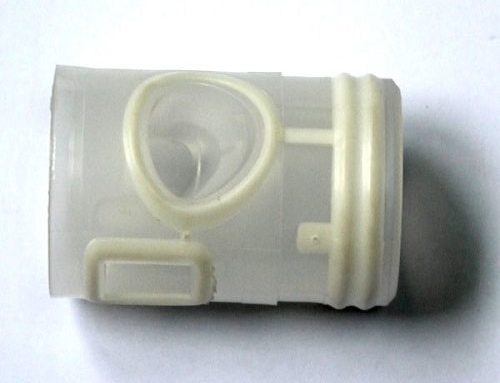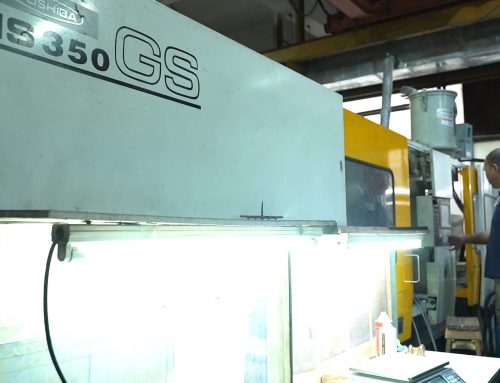Plastic toy mould design and processing characteristics
The key and difficulty of toy manufacturing depends mainly on the design, manufacturing and processing of toy molds. Toy molds are more diverse, complicated and combined than other molds. It includes plastic toy molds and metal toy molds.
Types of Plastic Toy Molds
Plastic toy plays a leading role in the toy market, and their production use almost all plastic molding processes. The most common plastic toy molds are in the following categories:
- Injection mold: It is the most widely used in toy production. It has the characteristics of high product quality, stable size, good finish and high production efficiency. It is applied to a toy with high quality requirements, many assembly parts, thick wall thickness and large batch size.
- Hollow mold: It is specially applied to production of hollow toy products with complex shapes, large wall thickness and large size, and low dimensional accuracy.
- Electroforming mold: It has a highly simulated outer surface because it can be directly electroformed according to actual material, so that even skin pores can be perfectly displayed. It is particularly suitable for production of head, torso and limbs on the toy dolls and animal.
Design characteristics of plastic toy molds
In addition to various requirements of plastic mould design in plastic moulding factory, plastic toy mold also has its particularity and focus in the actual mold design.
- Strong simulation of product design
Toys are epitome of nature, large to space universe, small to all kinds of animals and plants. It is necessary to imitate and abbreviate these creations of nature, so that they are imitation enough that can be a real mess. Therefore, design should consider high degree of simulation for toy.
- Pay attention to product design
Appearance directly reflects effect of toy product. Moreover, toy products are developing in the direction of crafts and quality, and design is particularly important. To achieve different appearance requirements, plastic mould design and process will be different. There are two ways of appearance design: molding and post-processing. In the molding, surface of toy has three kinds of conditions: 1 smooth surface; 2 matt surface; 3 various pattern surfaces. In these three cases, different mold cavity surfaces can be designed and processed according to different requirements. Post-processing forms include: secondary processing of plating, printing, bronzing, painting and other external surfaces. Therefore, different processes and mold designs should be carried out according to different appearance surface requirements.
- Many product accessories
A toy product sometimes needs to be assembled from up to hundreds of accessories. This requires that shape and size of each component should be fully considered in product design and plastic mould design. Pay attention to assembly relationship between accessories and ease of assembly. Since plastic molding has shrinkage, and this shrinkage varies with materials, shapes, and processes, more attention should be paid to adjusting difference between design size and actual size to avoid assembly difficulties.
- Combination of different forming processes
Due to different shapes and requirements, toys may be composed of accessories produced by different forming processes, such as injection molding, hollow parts or metal parts assembled into a toy. This requires different molds to be designed according to different process conditions in order to achieve complete and uniform assembly requirements.
Processing characteristics and processing technology of plastic toy molds
Based on above toy product design and plastic mould design requirements, toy molds in its processing characteristics and processing technology are also more complex and special than other molds. It must have a special processing technology to ensure. The following focuses on the processing characteristics and processing techniques of several toy molds:
- Simulation surface processing technology
For mold processing with simulation requirements, it is difficult to meet requirements by general conventional machining methods. It is also very difficult to manually engrave, and it is easy to get out of shape. Therefore, there are several special processes to meet processing of cavity surface of simulated surface.
1, Cavity surface chemical etching process: It can process various patterns, such as various patterns, imitation leather lines, imitation wood grain and so on.
2, Electroforming process: It is characterized by being faithful to the original shape.
Generally, there are two kinds of processing methods:
1, directly electroforming after being processed by physical object, and mold cavity is set by electroforming;
2, electroformed with same copper electrode as real object, and then set copper electrode as mold cavity.
- Contouring process
Since toy has an irregular shape, it is often necessary to use profiling during processing of mold. Following profiling processes are commonly used:
1, Directly process convex and concave molds with ratio of l:I. After sample with ratio of l:l is processed, as a master, convex and concave cavity are directly processed on the copy milling according to the ratio of l:l. It is suitable for processing large, medium and less demanding cavities.
2, Profiling process of Magnifying and reducing through making a profiling by enlarging sample several times. Proportioning several times to make a profiling, then profiling is reduced according to original scale during profiling process to obtain convex and concave die. It is more suitable for cavity machining of medium, small and complex fine patterns.
3, After shape of electric spark of EDM is machined, electrode spark formed by profiling is used to machine convex and concave mold cavity. It is often used for processing of concave mold.
4, Three-dimensional profiling process of CNC programming: It is common in CNC programming with character of high processing precision.
- Precision casting method forming convex and concave molds
It is often used in the manufacture of hollow molds, and is generally suitable for large and medium-sized molds with complex shapes but low precision requirements. Common casting methods include: high temperature casting such as cast steel and cast copper. It is suitable for large and medium plastic toy molds; medium temperature casting including cast aluminum, cast zinc alloy and suitable for medium and small plastic toy molds; low temperature casting generally suitable for small pattern cavity. However, disadvantages of these casting processes are large deformation, low precision, large error, and need to be reworked frequently.
- EDM Process
EDM process is one of the most commonly used processes in toy mold processing.
- Effective polishing method for cavity surface
In the toy mold, surface polishing is a very important work after plastic mould design, and polishing workload even accounts for more than 50% of entire molding cycle. How to achieve polishing requirements quickly and efficiently is a goal pursued by mold processing in plastic moulding factory. In particular toy mold has a small and deep cavity and it is difficult to polish. Although there are many electric polishing tools and other polishing techniques, manual polishing still plays a leading role at present. In order to achieve a good polishing effect, it is necessary to train a good quality polisher, have a strict polishing procedure, combine advanced polishing materials.




